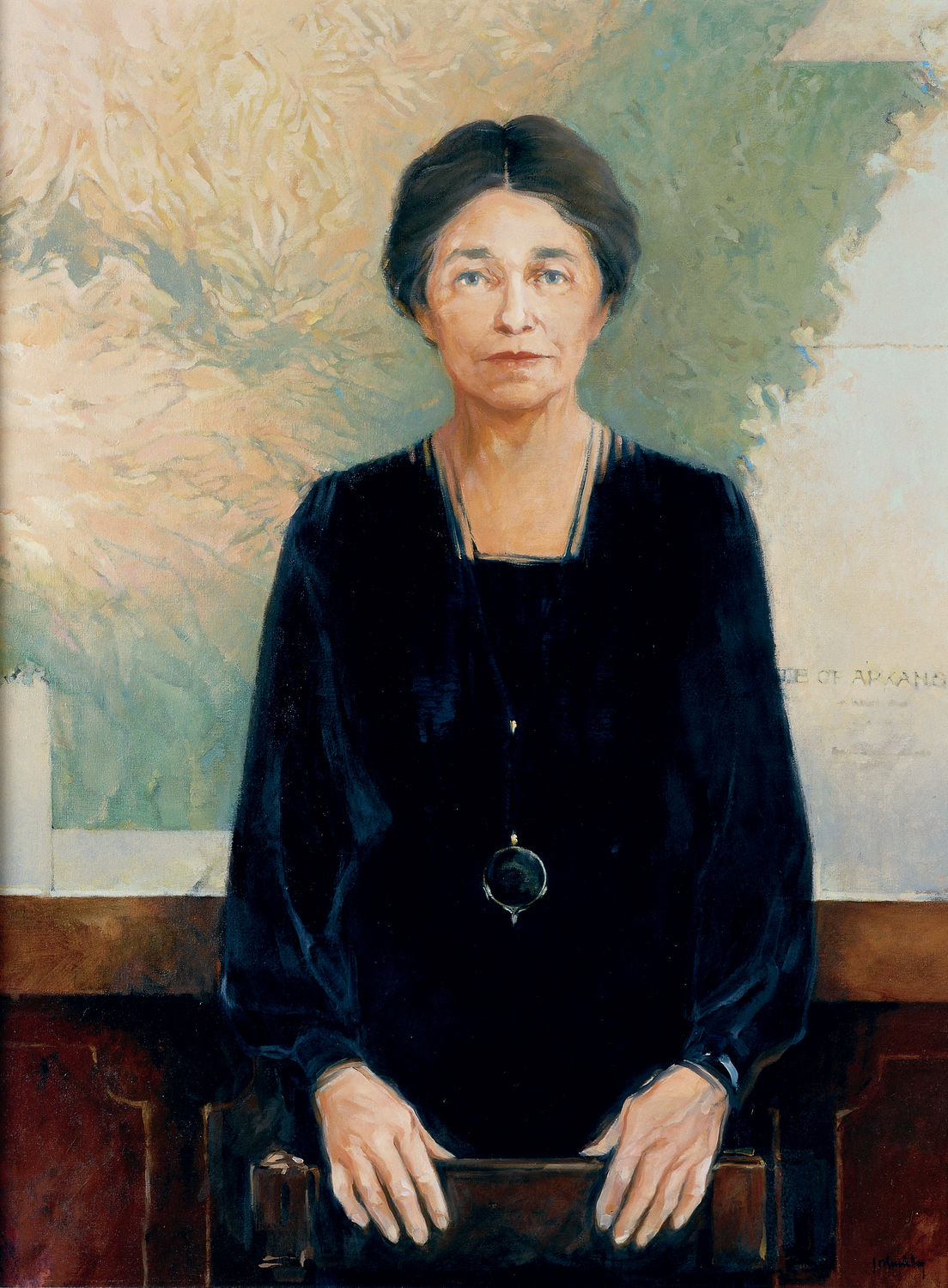
| Title | Hattie Caraway |
| Artist/Maker | John Oliver Buckley ( 1941 - Present ) |
| Date | 1996 |
| Medium | Oil on canvas |
| Dimensions | Sight: h. 39.5 x w. 29.75 in. (h. 100.33 x w. 75.565 cm)
Framed: h. 47.25 x w. 37.5 in. (h. 120.015 x w. 95.25 cm) |
| Credit Line | U.S. Senate Collection |
| Accession Number | 32.00028.000 |
In August 1993, Senators Dale Bumpers and David Pryor of Arkansas proposed to the Senate Commission on Art that a portrait of Hattie Caraway be considered for the Senate wing of the Capitol. The request met the acquisition policy guidelines established by the commission in 1976: Caraway had been out of office for more than 21 years, and historians who studied the senator’s political career agreed that she would be an appropriate subject for the Senate’s collection of commemorative portraits.
The Hattie Caraway Portrait Committee was subsequently formed in Arkansas, with the wives of Senators Bumpers and Pryor serving as honorary cochairs. This committee selected four Arkansas artists for consideration. The Senate Commission on Art—on the recommendation of a three-member advisory panel comprising museum curators from the Smithsonian Institution and the White House, and a professional artist—chose Arkansas painter John O. Buckley for the commission. The Caraway portrait was initially unveiled at ceremonies in April 1996 at the Arkansas Statehouse in Little Rock and also in Jonesboro, Arkansas. The portrait was then unveiled at the U.S. Capitol on June 24, 1996.
Buckley, who is from Little Rock, holds a master’s degree in fine arts from the University of Texas at Austin and has taught studio courses in painting and drawing at the University of Arkansas.
Hattie Ophelia Wyatt Caraway, born in Bakerville, Tennessee, was the first woman to be elected to the U.S. Senate. Following her marriage to Thaddeus Caraway in 1902, Hattie settled in Jonesboro, Arkansas, where her husband became a U.S. representative and later a U.S. senator. Upon her husband's death in 1931, Hattie Caraway was appointed as a Democrat from Arkansas to take his place in the Senate. She subsequently won a January 1932 special election to finish her late husband's term, then won the 1932 general election to a full term. Reelected in 1938, Caraway served nearly 14 years in the Senate.
During her precedent-setting Senate career, Hattie Caraway weakened many institutional barriers to women in elected office. In 1932 she became the first woman to unofficially preside over the Senate, a task she repeated in an official capacity in 1943, and then became the first woman to chair a Senate committee (Committee on Enrolled Bills, 1933–44).
Reporters often belittled Caraway's Senate service and labeled her as "Silent Hattie," since she preferred committee work to giving grand speeches in the Senate Chamber, but Senator Caraway quickly became comfortable in her role as the junior senator from Arkansas. She became a strong supporter of New Deal legislation, seconded the nomination of President Franklin Roosevelt for reelection at the 1936 Democratic convention, and ably represented her constituents through the difficult years of economic depression and war.
After leaving the Senate in 1945, Caraway served on the United States Employees' Compensation Commission and the Employees' Compensation Appeals Board. She died in Falls Church, Virginia, in 1950.